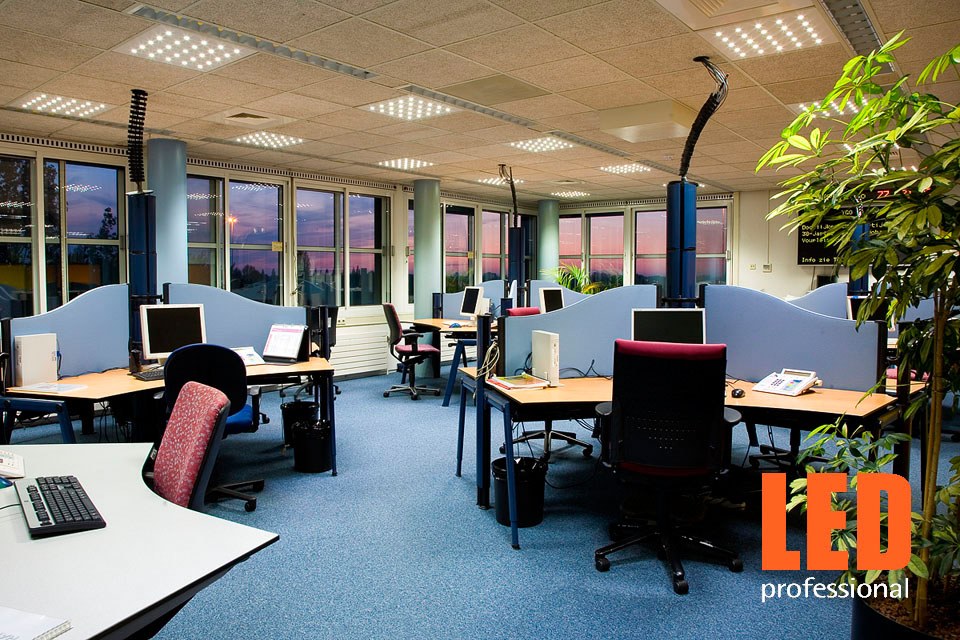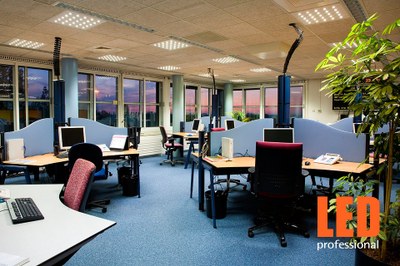Police Station in Rotterdam Changes to CO2 Emissions Reducing LED Lighting
From March to June 2008, a pilot project involving LED lighting was carried out at the Police Service Centre (PSC) of the Rotterdam-Rijnmond police force. This project came about as the result of cooperation between the Rotterdam Climate Initiative (a partnership between the local authority in Rotterdam, the Port of Rotterdam, DCMR and Detailings), the Rotterdam-Rijnmond Municipal Health Service (GGD) and the Rotterdam-Rijnmond police force. Cree supplied the LED chips to Evolutions and LedNed, their installation partners in Rotterdam.
The Police Service wanted to use this large-scale pilot installation to prove that LED lighting is energy efficient and environmentally friendly and one which employees also find pleasant. Likewise, the pilot was an opportunity to acquire general experience of LED lighting. The pilot was the first time that LED lighting had been implemented in the police stations of the region.
In the Police Service Centre, the LED lights were installed in the relaxation area of the police officers, in the 24hour Service Center, in the Management room and in the Chief’s room. The LED lights were installed in panels as well as tubes in two different colors, warm white and cool white.150 Cree XLamp LED components were used in 125 lighting fittings.
Both the power consumption and perception of the LED lighting were measured by Police Service Centre employees. The power consumption results reveal that with regard to zero measurement in the original situation, a saving of 55% was achieved when using LED panels and a saving of 49% when using LED tubes. The project was a great success also with regards to general perception of the lighting. A survey made after the project by the Rotterdam-Rijnmond Municipal Health Service revealed that 63% of respondents stated a preference for LED lighting at the workstation and even more impressively 88% of those questioned opted for LED lighting in the relaxation area.
An additional advantage of the pilot project was that greater insight was also obtained into the general and historical energy consumption of the premises where the PSC is located. This insight made the force management decide to carry out further studies in order to come up with energy-saving proposals for the whole region. Two new projects have started. In these business cases, attention will also be paid to subjects not covered in this trial such as, which LEDs are the best for an office environment, the certification of LEDs, the impact of shielding LEDs, etc.
“As the trial project was such a success, we now want to investigate LED lighting further”, explained Marjolein Teunissen, Deputy District Chef, District East. “LEDs could be the future, but developments are progressing rapidly and the timing of investment is crucial. The initial investment is high so the decision has to be taken with the long term in mind. Personally, I would like to see LEDs installed in every police station in the district in 5 to 10 years time. Measures such as these are essential if we want to meet our goal of reducing CO2 emissions by 50% by 2025.”


